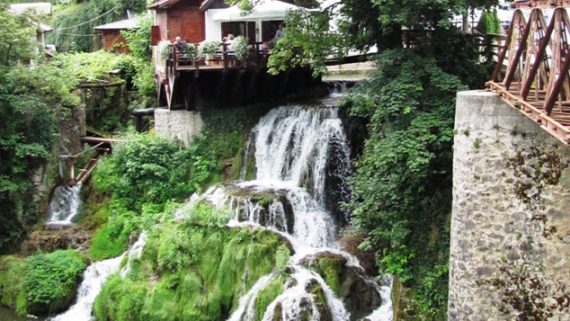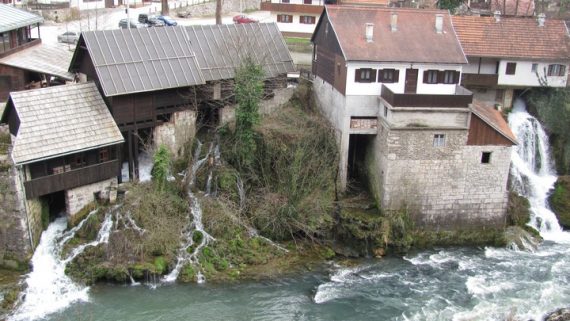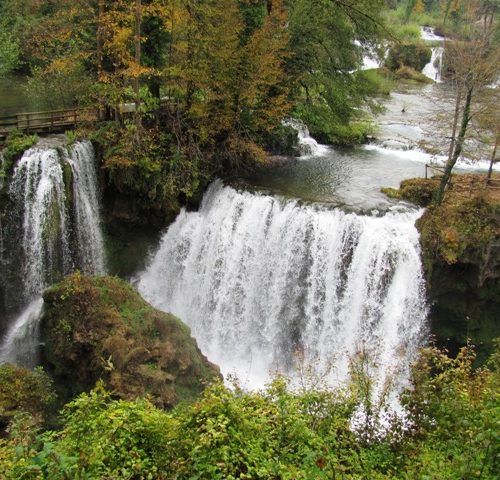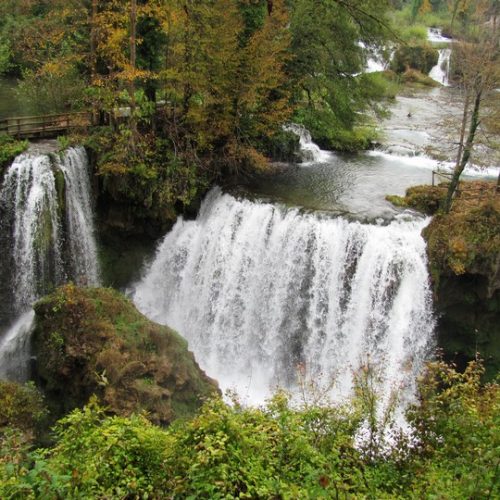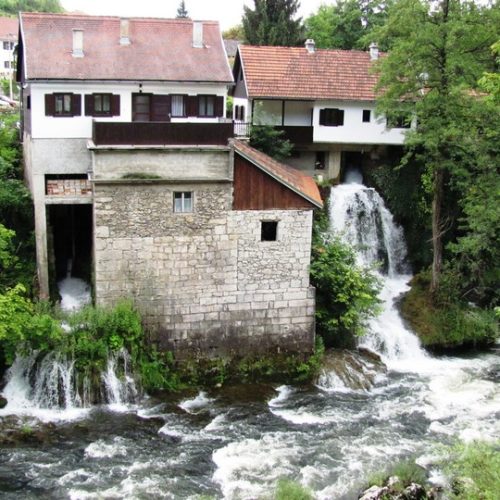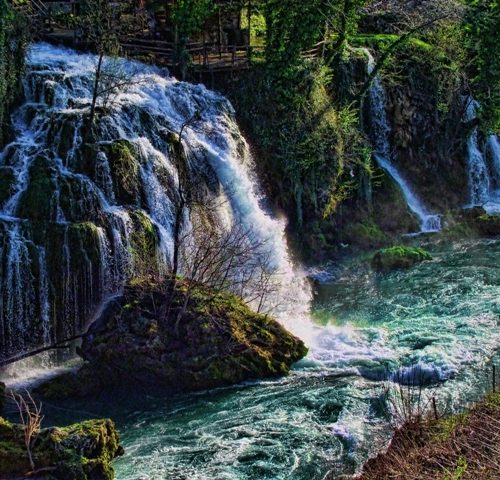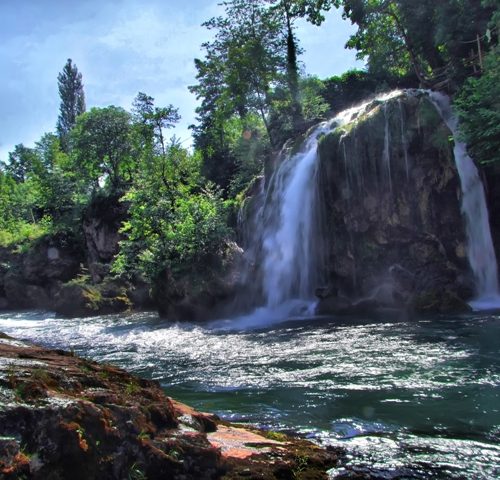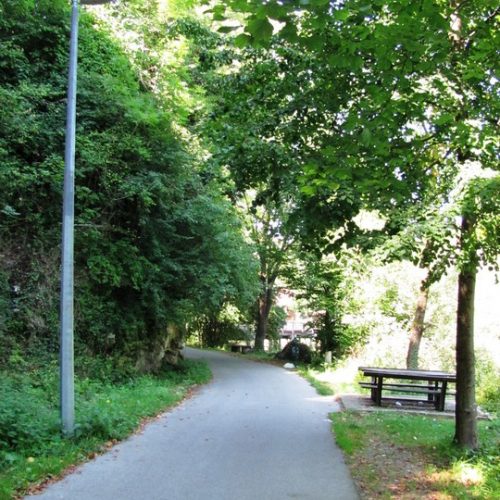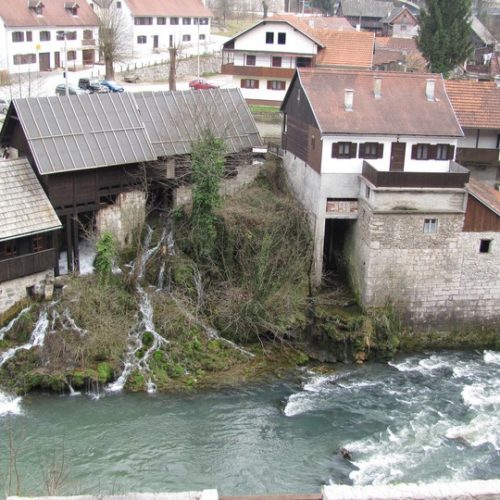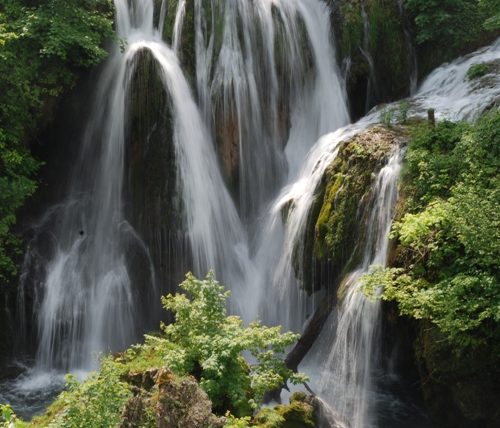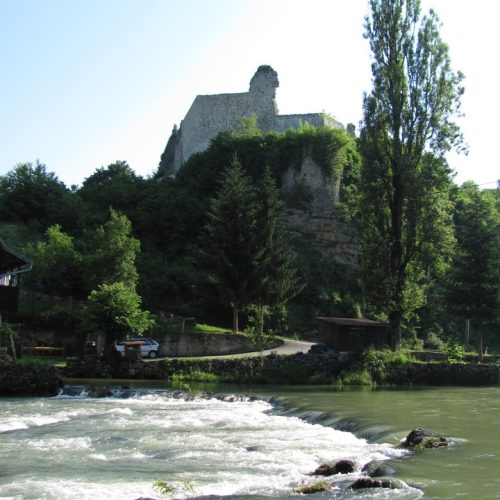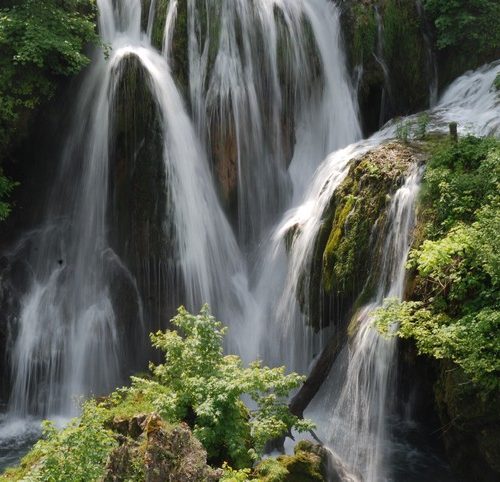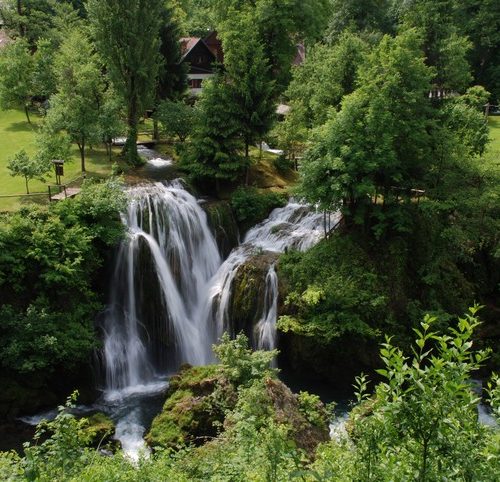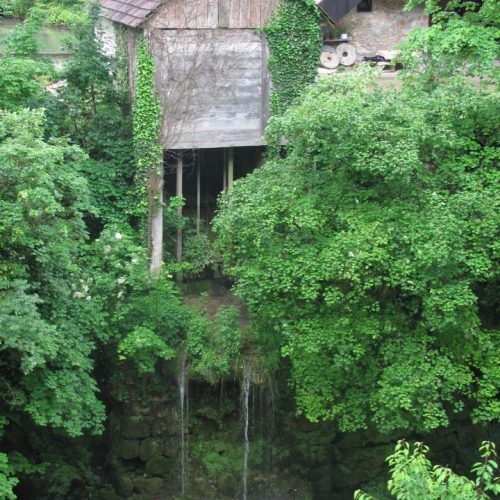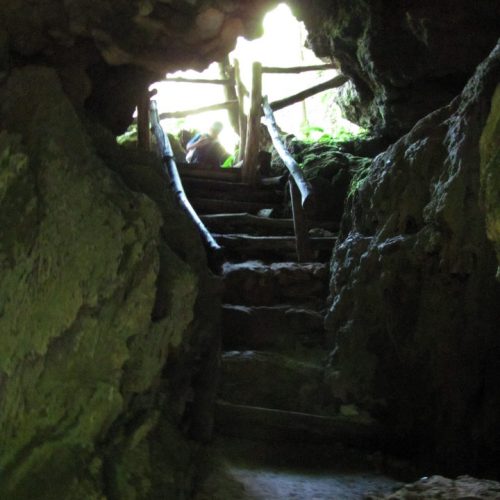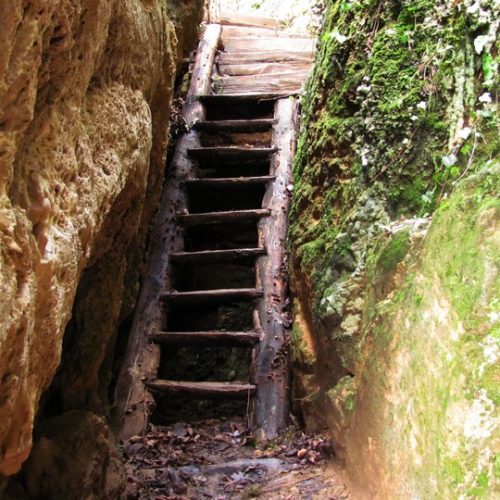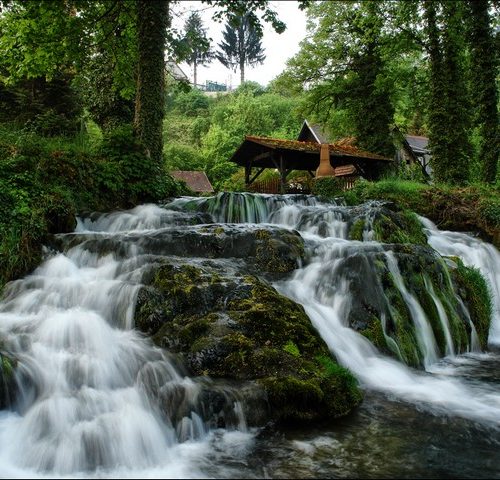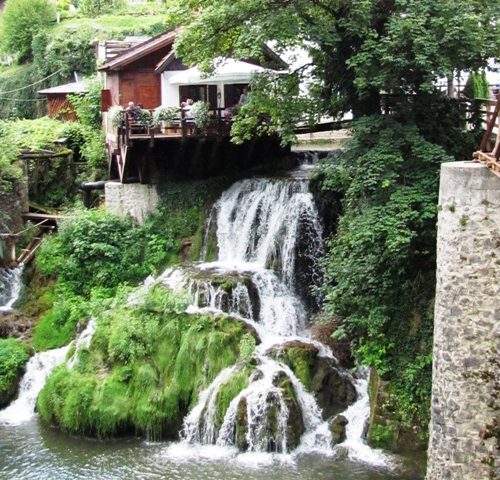Rastoke - Little Plitvice
Travertine is a spongy, karst stone, which is created underneath the waterfalls and in river beds, and it is an excellent building material, although now protected.
Slunjcica’s waterfalls, together with Plitvice lakes were unknown for a long time due to its traffic isolation, nor were they of any interest for the Turkish invaders during the Military Border. Rastoke tell us about the symbiosis of nature’s fantastic creations and human technical achievements dating for centuries back, with reference to watermills, so called spoon-mills. It was the first time that the primitive machines were not powered by human or animal power. The mills were built so, that a couple of mill stones were used for various types of milling. Besides them we come across so called baskets which served for rinsing of woolen items and clothes washing, so we can called the first-ever washing machines.
The first watermill dates from 17th century, while the majority of dwellings were built at the end of the 19th and the beginning of the 20th century, of cours all made of wood and travertine. Many of the waterfalls were named after the owners of the mills.
A long time, in the year 1860, a linguist and travel writer Adolf Weber Tkalcevic, describes Rastoke as an unspeakable suavity of spectacles, inviting travelers to come, see and admire. One of the waterfalls is described as enormous tile with a large floral pattern, while the other is described as a huge roman Fontana di trevi by Croatian cut.
Due to this architectural, historical and natural harmony and ethnographic heritage, in 1969 Rastoke were inserted in the National register of immobile monuments at the Regional institute for protection of cultural monuments in Zagreb.
 English
English Deutsch
Deutsch Italiano
Italiano Hrvatski
Hrvatski
